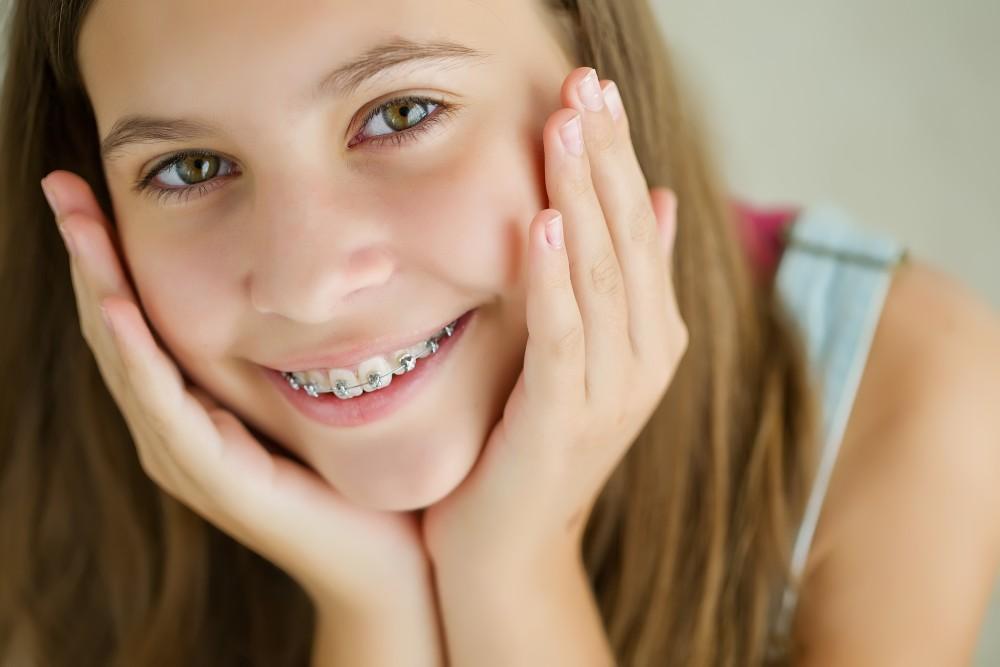
What Is the Best Age to Begin Orthodontic Treatment?

Orthodontic braces are a rite of passage during the teen years. Most teenagers get braces between the ages of 10-14, but did you know your child might need orthodontic treatment before all their permanent teeth come in?
It’s true. In fact, the American Association of Orthodontists recommends that kids get their first orthodontic evaluation around age seven.
Early treatment, or interceptive care, gives your child the best chance at lifelong oral health. That’s because orthodontists can recognize early signs of problems, like crooked teeth and bite misalignments, when they’re most treatable.
Walied Touni, DDS, MSD, is a board-certified orthodontist, specializing in pediatric orthodontics and interceptive care. He and our team at Touni Orthodontics in Sunnyvale, California, offer comprehensive orthodontic care for kids of all ages.
Your child’s first orthodontic evaluation
Kids need routine teeth cleanings every six months, beginning no later than their first birthday. Establishing regular care with a general dentist helps your child get used to going to the dentist, and building that relationship will continue to benefit them throughout life.
Once your child starts losing their baby teeth and permanent teeth begin coming in, it’s time to schedule an orthodontic evaluation. Most kids are about six years old when this happens, and you should take them to the orthodontist no later than age seven.
At their first appointment, Dr. Touni evaluates your child’s developing teeth, gums, and jaws. Some orthodontic issues, like crooked teeth, are visible right away, but other problems may be fairly hidden.
Dr. Touni is an expert in identifying early signs of more serious issues, from improper jaw formation and bite misalignments to overcrowded or gapped teeth. After your child’s evaluation, he recommends a treatment plan for their needs.
Some kids may need immediate intervention, like baby tooth extraction or appliances. Not every child needs early orthodontic treatment, but an orthodontic evaluation is the best way to identify potential issues as mouths and teeth grow.
Types of early orthodontic treatment
Early orthodontic treatment includes fixed or removable appliances, palate expanders, space maintainers, and more.
Phase I
Phase I orthodontic treatment takes place when your child doesn’t have all their permanent teeth yet. In some cases, kids still have most of their baby teeth when Phase I begins.
Interceptive care in Phase I can address a lot of common orthodontic issues, including:
- Underbite
- Overbite
- Crossbite
- Crowded teeth
- Gapped teeth
- Abnormal number of teeth
If your child sucks on a thumb or pacifier, this habit can negatively affect teeth and jaw growth over time. Interceptive care can address these issues to improve mouth function. Dr. Touni generally recommends Phase I interceptive care only when your child has a significant risk of orthodontic problems as they grow.
Phase II
Phase II begins once your child has all their permanent teeth. Also called full orthodontic treatment, this phase may include traditional orthodontic braces or clear aligners.
Even if your child doesn’t need Phase I treatment, it’s important for them to have regular check-ups as recommended by our team. Dr. Touni may want to monitor your child’s growth as their permanent teeth come in.
Orthodontic treatment in the teen years and beyond is focused on perfecting the look and function of teeth. Remember that even if your child didn’t get a full orthodontic evaluation before they got all their permanent teeth, it’s never too late to benefit from orthodontics.
Give your child a healthy start to a beautiful smile with early orthodontic care. Schedule a consultation at Touni Orthodontics by calling our office or requesting an appointment online today.
You Might Also Enjoy...


When Should I Bring My Child in for Their First Appointment?

My Jaw Pops, but It Doesn’t Hurt: Do I Need Treatment?

Can Self-Ligating Braces Reduce Treatment Time?

Do Overbites Get Worse Over Time?

